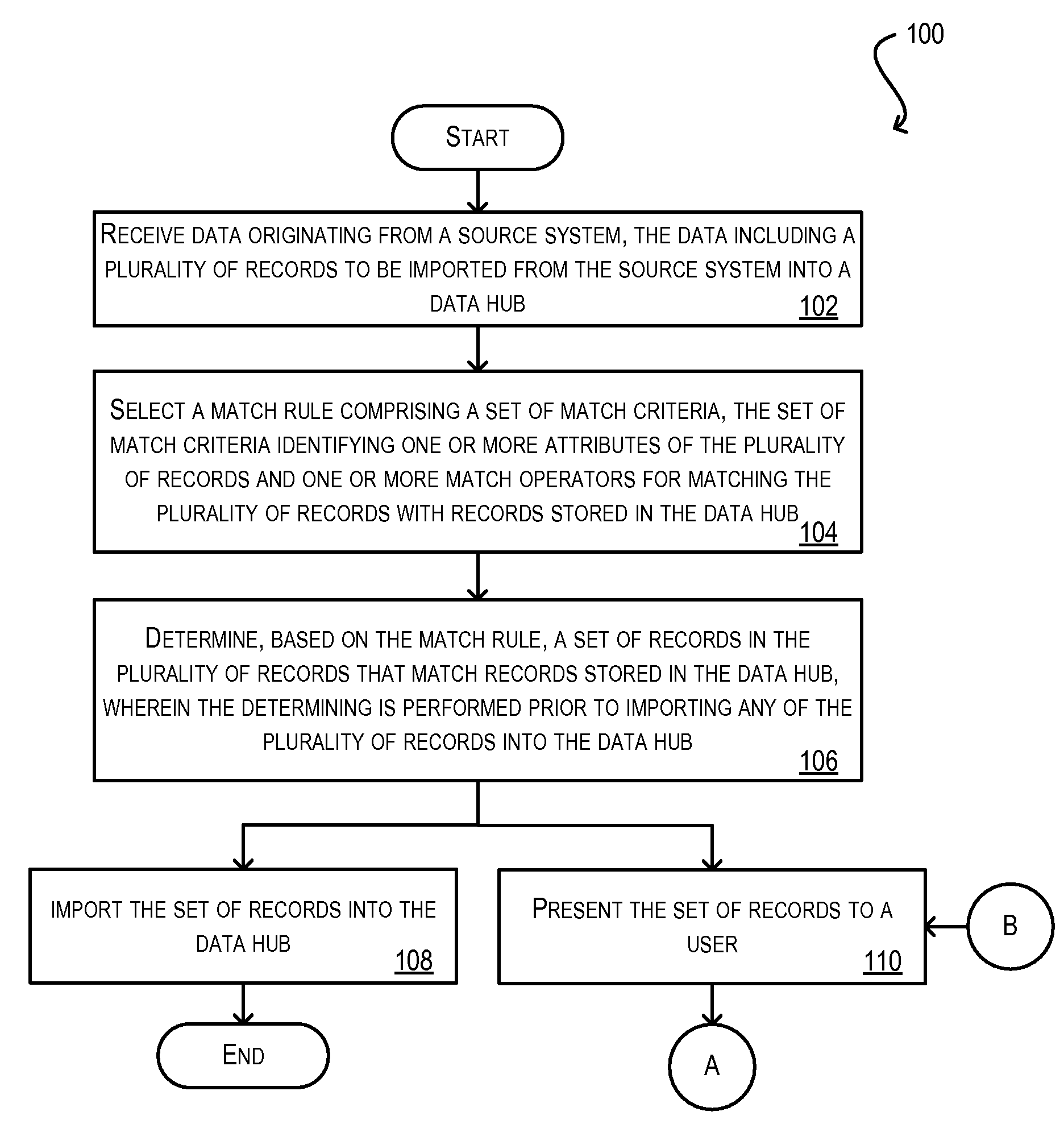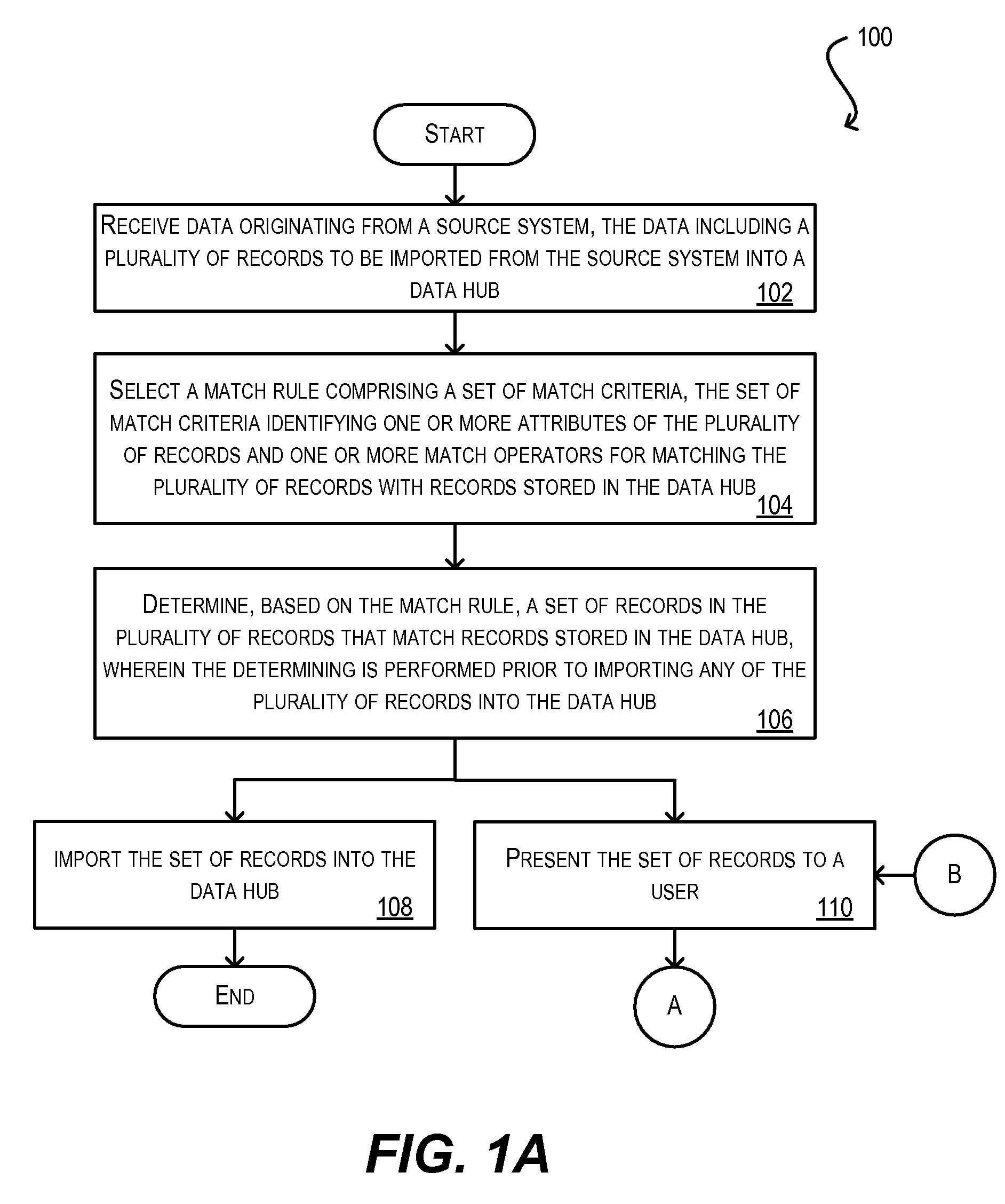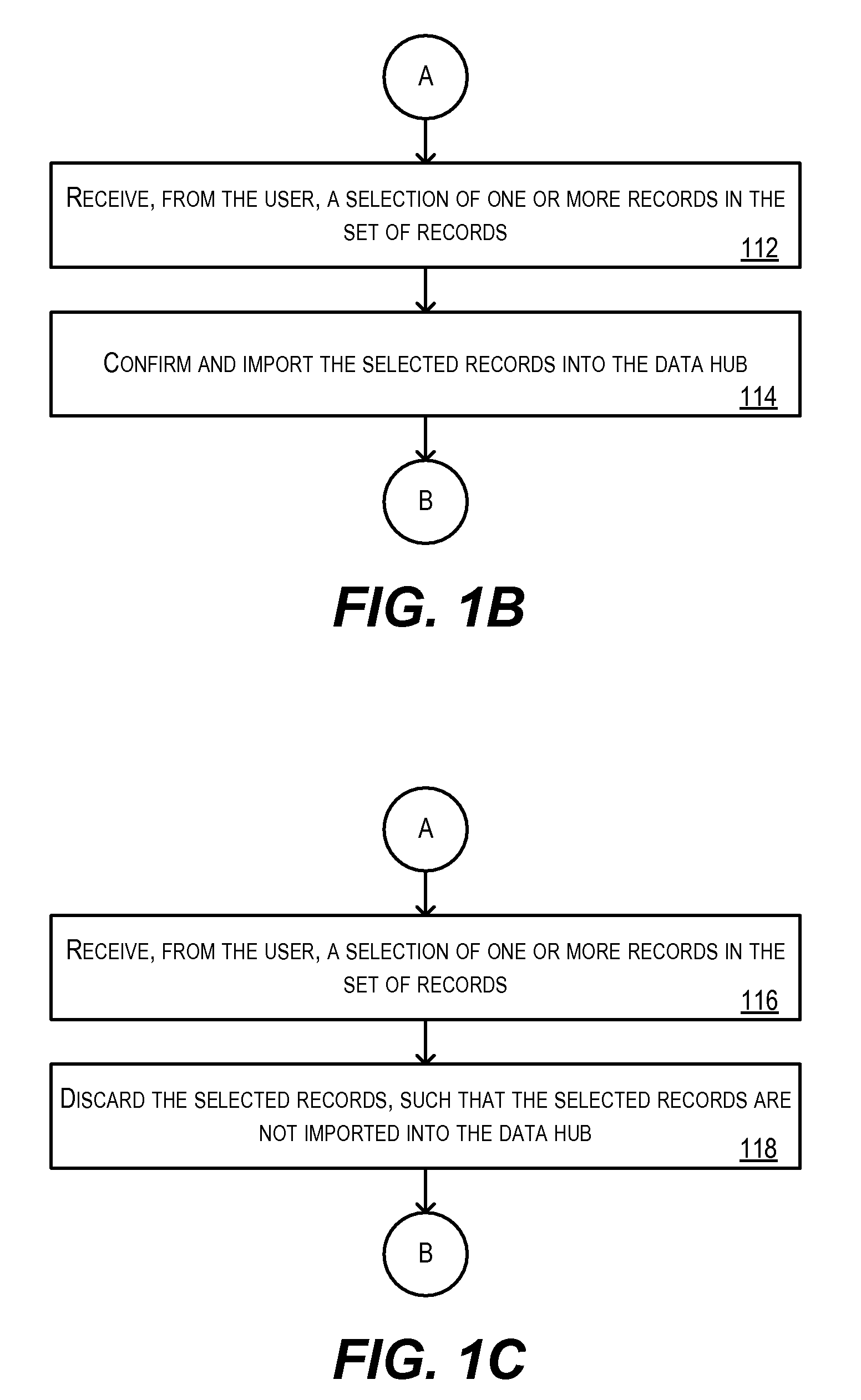Match rules to identify duplicate records in inbound data
a technology of matching rules and inbound data, applied in the field of information management, can solve problems such as inefficiency and time-consuming, duplicate or overlapping records per item, and inability to identify duplicate records,
- Summary
- Abstract
- Description
- Claims
- Application Information
AI Technical Summary
Benefits of technology
Problems solved by technology
Method used
Image
Examples
Embodiment Construction
[0032]In the following description, for the purposes of explanation, numerous specific details are set forth in order to provide an understanding of the present invention. It will be apparent, however, to one skilled in the art that the present invention may be practiced without some of these specific details.
[0033]Embodiments of the present invention provide techniques for identifying duplicate records in inbound data (e.g., data to be imported into, for example, a data hub). According to one set of embodiments, a batch of inbound records originating from a source system is received, and a match rule for the inbound records is selected. The match rule may be selected based on the source system, a category associated with records in the batch, or the batch itself. In various embodiments, the match rule comprises one or more match criteria for identifying records in the inbound batch that match records stored in a destination data hub.
[0034]Once the match rule is selected, the match ...
PUM
 Login to View More
Login to View More Abstract
Description
Claims
Application Information
 Login to View More
Login to View More - R&D
- Intellectual Property
- Life Sciences
- Materials
- Tech Scout
- Unparalleled Data Quality
- Higher Quality Content
- 60% Fewer Hallucinations
Browse by: Latest US Patents, China's latest patents, Technical Efficacy Thesaurus, Application Domain, Technology Topic, Popular Technical Reports.
© 2025 PatSnap. All rights reserved.Legal|Privacy policy|Modern Slavery Act Transparency Statement|Sitemap|About US| Contact US: help@patsnap.com



